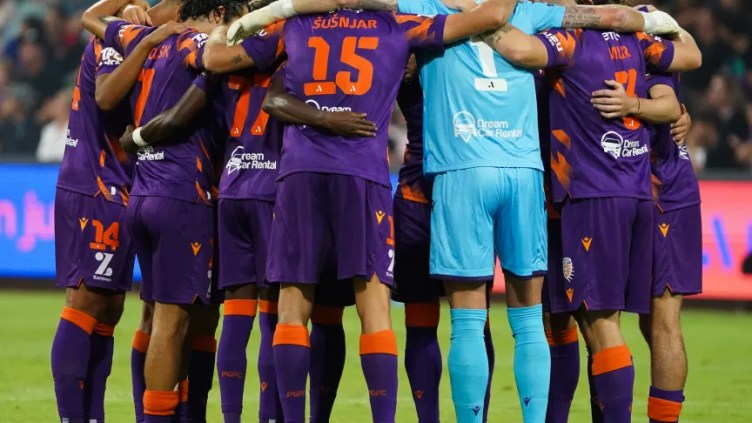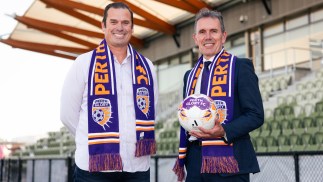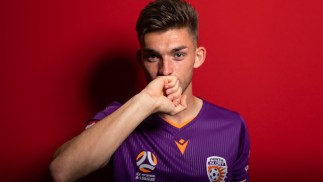Western Australia is enjoying a golden age. They are churning out good players by the bucket-load and their state programs have a lot to do with the success.
Golden Age in the Golden West? You bet.
Historically, Western Australia hasn’t exactly been a hotbed of talent. In the pre-NSL era, the tyranny of distance kept the best players at home, well away from the watchful eyes of those who picked the national team. In the first 20 years of the NSL, the absence of a Perth side meant players like Robbie Zabica, Robbie Dunn, Arno Bertogna, Tony Franken and Gary Marocchi had to head east to pursue their dreams – doing it well enough to wear the green and gold. But it was hit-and-miss.
The arrival of Perth Glory in 1996 finally gave the best from the west a platform and true to the charter of founding owner Nick Tana, the coach (Marocchi) and a decent percentage of the players were homegrown. But still, in the eyes of successive national coaches, picking a player from the west remained an exception rather than the rule. Most of the handful of players who did play for the Socceroos just before and just after the turn of the century – among them Stan Lazaridis, Shaun Murphy, Alistair Edwards and Chris Coyne – were playing overseas and essentially couldn’t be ignored.
So what’s changed? Plenty. Over the last few years, a development pathway has emerged which is the equal – if not better – than most other states. It’s pumping out an extraordinary conveyor belt of talent. Take a bow, Kenny Lowe. More on him in a moment.
Just take a look at this list. Josh Ridson (Perth Glory), Trent Sainsbury (Central Coast Mariners), Adam Taggart (Newcastle Jets), Eli Babalj (Red Star Belgrade), Julius Davies (Brisbane Roar), Sam Mitchinson (Melbourne Heart) and Cameron Edwards (Melbourne Heart). All the same age. All graduates of the local NTC program.
Give or take a few years, you can add Scott Neville (Newcastle Jets), Shane Lowry (Millwall), Ryan Williams (Fulham), Aryn Williams (Burnley), Ryan Edwards (Reading), Rhys Williams (Middlesbrough), Chris Herd (Aston Villa), Mitchell Oxborrow (Newcastle Jets), Tom King (Stoke City), Cameron Burgess (Fulham), Alex Grant (Portsmouth) and Callum Richardson (Burnley) to an impressive list. Some came through the NTC, others through the nursery of ECU Joondalup, a state league club with a hotline to England.
Either way, they’re proud Sandgropers. Most have played for Australia at either senior, or youth level. Largely, they’ve got their best years ahead of them. From a state which has made its wealth from mining, this truly is football’s mother lode.
”We were sitting around the other day working out what sort of West Australian team we could put out in a couple of years, and we were blown away,” says Lowe, the NTC coach. ”I can’t say whether it’s the golden age for WA, but it would definitely be some team.”
Gareth Naven, who has developed a tight-knit partnership with Lowe in his role as Perth Glory youth coach, is less circumspect. ”I’ve never known a group like it,” he says.
”For the first time, we’ve got the right structures in place for the players to go from one pillar to the next. You’re a young kid over here, and you can play NTC as well as for a state league club, and that gives you 40 games a year. Then you come to us, and from there the world opens up.
Everyone is starting to work together, and you can see the results. We’re hitting all the right targets, which is pleasing.”
They certainly are. In recent years at national youth championships level, WA have been excelling. In 2011, Lowe’s team claimed the coveted NTC Challenge title – an award based not just on results, but on playing style.
Lowe might have spent his playing career in England’s non-league environment, but the premium he placed on skill as a player has been the cornerstone of his coaching philosophy. A reminder that you should never judge a book by its cover.
Lowe’s beliefs, and his methods, are universally acclaimed within the development system. Certainly he deserves enormous credit for the incredible success of his program over the nine years since he’s been in charge.
There have been other factors, of course. The influx of African migrants has provided a rich seam of raw talent (there are five African-born players currently in Perth Glory’s youth squad). The establishment of the National Youth League has helped. But fundamentally Lowe has been able to establish something special in the west. The rewards are evident.
”Every time one of our kids signs a pro contract, there’s a bit of pride that we might have played a part in that,” says Lowe.
”But it’s not about me, or the other coaches. There’s no egos from our side. I think what we’ve got here is the right environment for people to succeed. We’re basically one big family, where the players are always the focus. We’re just a conduit. There’s only two basic rules. We want them to leave here as better players than when they came. And we want them to leave here as better people.”
Clearly, the approach is working. It’s not hard to imagine the Qantas Socceroos squad, post-2014, having a record WA contingent. And the production line is showing no signs of slowing. Already there are ripples of excitement about the next generation of NTC graduates, led by striker Daniel da Silva.
Perhaps the only disappointment in what’s otherwise a great success story is that so few of these players kick-off their professional careers with their hometown club. When Newcastle Jets visited nib Stadium recently, there were as many Sandgropers in the away dressing room as the home one. Lowe declines to make a judgement on that, saying only: ”I’d love it if all the players were at the Glory, but it’s probably the same at every club.”
Maybe. But at the very least, in this Golden Age in the Golden West, it’s an oversight the club would do well to address.



